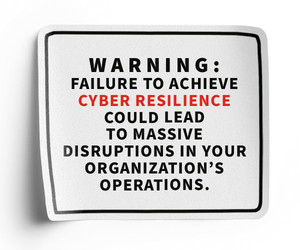What Is Cyber Resilience?
The National Institute of Standards and Technology defines cyber resilience as “the ability to anticipate, withstand, recover from and adapt to adverse conditions, stresses, attacks, or compromises on systems that use or are enabled by cyber resources.”
What does that mean for schools? “This means you’re able to respond to problems, shut down an attack and recover from it,” explains Amy McLaughlin, project director for CoSN’s Cybersecurity and Network and Systems Design initiatives. “You’re able to identify attack behavior, terminate it and get the data back. Then, you’re able to lock down the threat right away.”
DISCOVER: What happens if the network goes down? K–12 delves deeper.
What Technologies Help Schools to Be Resilient and Recover?
To support cyber resiliency, experts suggest schools should align to a cybersecurity framework such as NIST’s CSF 2.0, which provides guidance on managing cybersecurity risk. Efforts to support resilience don’t typically require large expenditures and are within every school’s reach. They include implementing multifactor authentication, removing administrative access across user accounts and enabling long passwords consisting of at least eight characters.
“We are seeing a lot of bad actors dispersing their activity across entire geographic areas,” says Don Wolff, CTO for Portland Public Schools. “The bear-in-the-woods theory applies here. Schools that do at least the bare minimum of preventive measures for resilience will be passed over — the bear won’t bother with them because it’s looking for easy pickings. It’s a harsh truth: If you’re more difficult to hack than the next district over, you won’t be the one that gets targeted.”
An additional consideration is how best to maintain learning continuity. Cyberattacks can greatly impact a school’s primary mission of classroom learning. Schools need a plan for carrying on learning if they lose systems and data.
“One risk we have is that people become reliant on certain tools for day-to-day learning functions,” says McLaughlin. “What is your alternative? What can you shift to? You need to be prepared for losing the internet or other online systems. Be prepared to pivot to traditional classroom learning delivery.”
DIG DEEPER: What schools should know about business continuity.
What Is Cyber Recovery? How Is it Different from Disaster Recovery?
Cyber recovery is similar to disaster recovery, which also focuses on restoring access and functionality to critical IT systems as quickly as possible. But with cyber recovery, it is a cyberattack — not a natural disaster or one caused by humans — that defines the recovery efforts.
Cyber recovery involves a comprehensive and proactive plan that operates from the presumption that a successful cyberattack is inevitable. Cyber recovery also focuses on preparation and remediation efforts that include incident response, continuous monitoring, security controls, accelerated response to threats, and orderly restoration of data and systems.
“I see this as two-tiered: cyber recovery and cyber restore,” explains Wolff. “Recovery is the level of operations I can restore for basic functioning in the district, meaning people can log in to systems. Restore means everything is back, and you wouldn't notice that something has happened — no breach, no data loss.”












